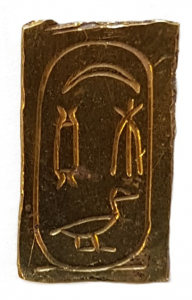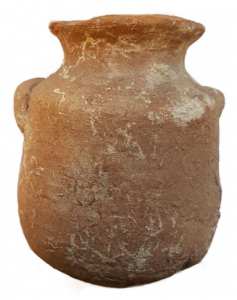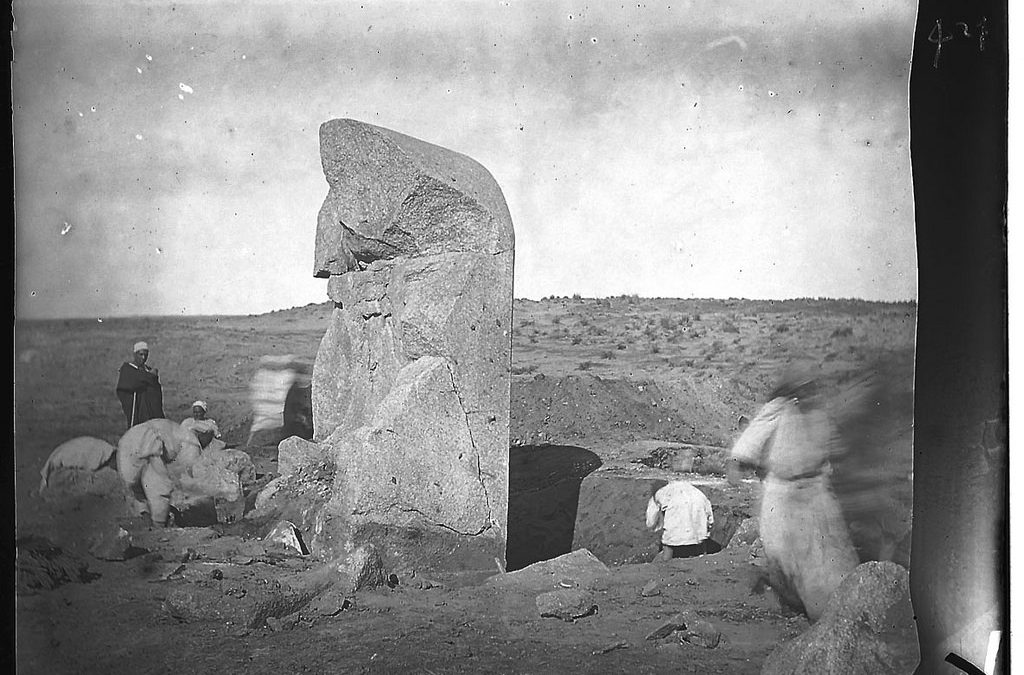
British Museum EA23503
When Flinders Petrie arrived at the site of Tell Nabasha in early February 1886 he found that the site consisted of a tell (a hill of degraded mudbrick) surrounded by salt flats and swamps. He set to work excavating a large cemetery, a Ptolemaic ‘town’ and a large temple complex. On March 13th 1886, Underneath the foundations of the smallest temple (most likely dedicated to Min, Lord of Imet) Petrie’s excavators located a foundation deposit consisting of ceramics and plaques made from various materials – faience, lead, gold and silver – some inscribed with the throne name of Amasis II (570-526 BCE), the penultimate ruler of Egypt’s 26th Dynasty. In his journal Petrie describes how the high water table made excavating the deposits difficult work:
As it was only a couple of inches above water level I took off my boots & stepped in, & began picking the red pottery vases, or rather models of vases, out of the sand & water; soon it was only a matter of groping in the water, & then I made a deep grope, & brought up a porcelain plaque; I rubbed the sand off eagerly & read the cartouche of Aahmes. (Griffith Institute Archive, Petrie MSS 1.5.51-100).

British Museum EA22284
The foundation deposit consisted of around ninety-five miniature vessels mimicking known shapes such as amphorae, plates and pot-stands. Today twenty-five of these vessels are in the British Museum with the remainder being located in the Cairo Museum, Boston Museum of Fine Arts, the Ashmolean Museum, the Penn Museum and the Petrie Museum of Egyptian Archaeology. Along with the vessels, Petrie also located fifty-three plaques, eleven of which are in the British Museum. They include a beautiful example fashioned in gold, inscribed with the birth name of Amasis II iaH-ms(w).
Foundation deposits are the primary archaeological evidence of the complex foundation rituals which preceded the construction of temples in ancient Egypt. These ceremonies are shown in depictions, and occasionally described in texts such as inscriptions in the Edfu Temple dating to the Ptolemaic Period. Foundation deposits containing vessels and plaques of a similar shape have also been found elsewhere in the Nile Delta, such as at the site of Mendes.
 Dr Nicky Nielsen is currently working on a monograph publishing the material from the site of Tell Nabasha held in the British Museum. The artefacts were excavated in 1886 by the British archaeologists Flinders Petrie. In this blog, he takes a look at a Late Period foundation deposit found at the site.
Dr Nicky Nielsen is currently working on a monograph publishing the material from the site of Tell Nabasha held in the British Museum. The artefacts were excavated in 1886 by the British archaeologists Flinders Petrie. In this blog, he takes a look at a Late Period foundation deposit found at the site.







Recent Comments